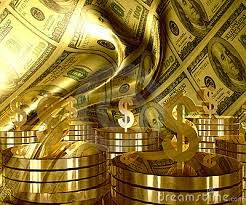Undoubtedly, Yemen's turbulence had to play a major part in this up-move. Gold was rocketed towards a break out of USD $1220 that acts to be its key resistance. Silver did follow Gold up-move and touched a high of USD $17.41. Initial air strikes by Saudi Arabia caused a spike in oil prices and other commodities edged higher.
The current volatility in gold has been mainly due the recent comment by Fed Chair Janet Yellen that the policy makers won’t be rushing on rate hike. The Fed has kept its benchmark rate at a record low near zero for more than six years.
Some of the important statements released by Federal Reserve Chair Janet Yellen were-
- She said Friday that continued improvement in the U.S. economy means an increase in the Fed's key interest rate could come later this year but at the same time she stated that any rate increases would happen gradually.
- Yellen said Japan's experience over the past 20 years argues for a cautious approach.
- She stated that main reason for this gradualist approach is that the risk of raising them quickly is much higher than doing so gradually. Tightening the loan rates could stall the economy. Which will again have its own side effects.
- Both Yellen and Fischer stressed the Fed's expectation that rate hikes would be gradual and that the Fed's action would depend on how the economy performs in coming months.
Next week markets continue to look volatile for gold as the market will react to data in anticipation of potential Federal Reserve rate hikes and Saudi strikes in Yemen.
Gold prices have a more bearish outlook. Reasons being:
- The U.S economic data have so far continued to impress and another positive commentary would subsequently end the recent rally in the price of gold. A stronger than expected US PMI data and some hawkish comments from Feds Lockhart did take some shine out of the rally. Even the unemployment claims filed by US citizens have fell more than expectations creating a sign of stonf fundamental growth.
- Weakening demand for gold from China and India poses several challenges for the yellow metal to reach its January highs. China's gold imports from Hong Kong fell to their lowest in six months in february, data showed on Thursday. Whereas the sudden jump in prices have dampened demand in Indian markets.
- SPDR Gold trust has continued to see outflow in-spite of the ongoing rally, where it reported that the holdings fell by nearly 6 tonnes to 737.24 tonnes on Thursday, the lowest since January.
If anything, the recent rally is a magnificent reward to gold bulls, especially considering the overall market bias, and hence some would be looking to cash in at the current level which would again put more pressure on the price. This would shift focus from gold to US equities and the USD thus pressuring gold prices to fall further.
But the ones who believe that the market is bullish for gold have their own justifications. They believe that a long with uncertainty in the Middle East, Greece’s negotiations could also create a safe-haven bid for gold next week.
The bottom line is that the recent rally in the price of gold lacks enough catalysts to sustain it towards levels seen in late January. In fact, based on recent events, a lot more could count against a continuous rally thereby signaling an end to the current run.
TRADE RANGE:
But the ones who believe that the market is bullish for gold have their own justifications. They believe that a long with uncertainty in the Middle East, Greece’s negotiations could also create a safe-haven bid for gold next week.
The bottom line is that the recent rally in the price of gold lacks enough catalysts to sustain it towards levels seen in late January. In fact, based on recent events, a lot more could count against a continuous rally thereby signaling an end to the current run.
TRADE RANGE:
METAL
|
INTERNATIONAL
|
DOMESTIC
|
GOLD
|
$1185-$1230 an ounce
|
Rs.26,000- Rs.27,500 per 10gm
|
SILVER
|
$16.40-$18.00 an ounce
|
Rs.37,600- Rs.40,000 per kg
|
INVESTMENT MANTRA:
Buy on corrections and keep investing systematically every month. You may take the services of Bullion India for Systematic investment plan.
I feel that Silver will surpass Gold in the future. The price range between INR 33000 to INR 40000 does serve as a strong appetite for Silver consumption.
Buy on corrections and keep investing systematically every month. You may take the services of Bullion India for Systematic investment plan.
I feel that Silver will surpass Gold in the future. The price range between INR 33000 to INR 40000 does serve as a strong appetite for Silver consumption.
“The primary purpose of this blog by Prithviraj Kothari - MD, RSBL, is to educate the masses of the current happenings in the Bullion world.”
- Previous blog -
"An Action Packed Week For Gold"
- Previous blog -
"An Action Packed Week For Gold"
http://riddisiddhibullionsltd.blogspot.in/2015/03/an-action-packed-week-for-gold.html





